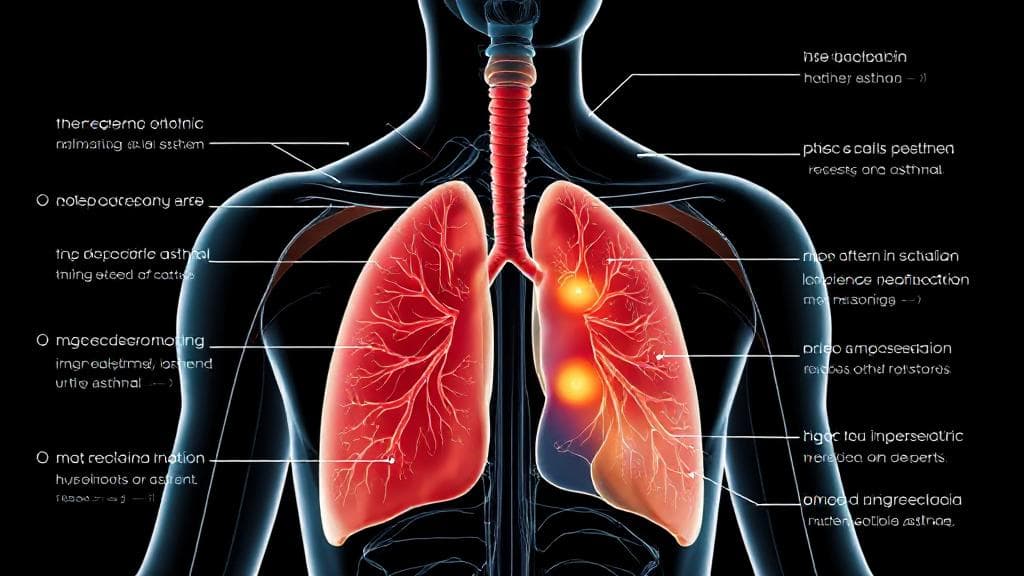Understanding Asthma and Its Impact
Asthma is a chronic inflammatory disease that affects approximately 339 million people globally, according to the World Health Organization, making it one of the most common respiratory disorders. The impact on the respiratory system is profound, affecting both structure and function of the airways.
Primary Effects on Airways
When asthma occurs, three main changes take place in the respiratory system:
- Bronchial inflammation
- Bronchial constriction
- Excess mucus production
Pathophysiology and Structural Changes
Airway Inflammation
The inflammatory process involves various cell types and mediators:
- Eosinophils releasing granules containing major basic protein
- Neutrophils contributing through reactive oxygen species
- T-lymphocyte activation
- Mast cell proliferation
- Enhanced cytokine production
Airway Remodeling
Long-term asthma can lead to permanent changes in the airways:
- Thickening of airway walls
- Increased smooth muscle mass
- Enhanced blood vessel formation
- Subepithelial fibrosis
- Changes in the extracellular matrix
"The narrowing of airways during an asthma attack can reduce airflow by up to 80%, making it extremely difficult for patients to breathe normally." - American Lung Association
Symptoms and Clinical Manifestations
Common Symptoms
- Wheezing: A high-pitched whistling sound during breathing
- Shortness of breath: Especially during physical activity
- Chest tightness: A feeling of pressure or constriction
- Coughing: Particularly at night or early morning
Impaired Lung Function
Asthma affects key indicators of lung function:
- Reduced Forced Expiratory Volume (FEV1)
- Fluctuating Peak Expiratory Flow (PEF)
- Decreased lung capacity
- Altered gas exchange efficiency
Management and Treatment
Medication Approaches
Lifestyle Modifications
Effective management includes:
- Avoiding triggers (allergens, smoke, pollution)
- Regular exercise within limitations
- Maintaining good air quality
- Following an asthma action plan
- Monitoring symptoms and peak flow readings
Prevention Strategies
Environmental Control
- Regular cleaning to reduce allergens
- Using air purifiers
- Controlling humidity levels
- Avoiding exposure to smoke
Early Intervention
- Regular medical check-ups
- Peak flow monitoring
- Prompt treatment of infections
- Vaccination against respiratory illnesses
For more detailed information, visit resources such as:
